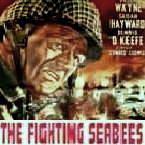ITAKLinus
Posts: 630
Joined: 2/22/2018
From: Italy
Status: offline

|
Working in logistics in volatile envornments... Logistics is my passion!
I think the advice you received above is just perfect.
Generally, people tend to work organising hubs and then from hubs they do send minor convoys to bases around. I do basically the same.
I just add few elements:
1) Bear in mind and "study" different load rates for different locations. A base such as Palembang, for example, loads differently from Oosthafen because of the presence of refineries.
2) Bear in mind and "study" the different loading/unloading rates for different ship classes. In general, the smaller the cargo per vessel and the easier it is to load/unload it, meaning that large ships are less efficient than smaller ones in terms of loading/unloading rates if the harbour is not big enough.
3) Take from the various sources on the forum or, better, develop your own "efficiency spreadsheet" where you rate the efficiency of your cargo classes. The easiest ones are the ones taking into consideration just fuel consumption, but it's a very complicated and broad subject if you want to go deeper.
4) Learn how to do a proper ASW. ASW is fundamental and you can run convoys in relatively unsafe ways if you have a strong ASW. It implies mines, night/day NavS, ASW-dedicated a/c and pilots, ASW-TFs.
I have a fairly simple organization.
For TKs/AOs:
- Smaller vessels (Mainzu Class and those 12knts per 1.250 capacity ones) take care of Miri/Palembang/Burma/Medan shipping to Singapore.
- Tonan Class are used to ship from Balikpapan to Truk or to Australia (I have Australian industry I somehow feed) alternatively.
- Smaller vessels ship from Babo and Boela to Babeldaob. Tarakan the same.
- In Java I increased HI in order to produce supplies and HI points directly on the spot and reduce the overall shippings from the island to Onshu. I rarely ship anything out of it. When I reach 170k I use the single, big, fast convoy on the route Singapore-Nagasaki to do a single run Java-Onshu. It happens once every 4 months roughly.
- Single, big, fast convoy from Singapore to Onshu. All the 19/18knts TKs are there and heavy escort. It runs continuously from Singapore to Onshu bringing FUEL or OIL depending on Singapore's stock when it leaves.
- Small 12knts TKs are used in small convoys (2-ships each) to ship OIL from Shakhalin and Formosa to Onshu.
I use 13knts AOs as either reserve or for additional shippings. 18/19knts AOs are always loaded and disbanded in useless random dots, together with their heavy escorts, in order to be ready for fleet actions.
Other small convoys take care of redestribution of FUEL from hubs to peripheral bases. I prefer using xAKs, though.
Resources.
- Shikuka (port lvl=7) to Wakkanai (port lvl = 7). 2 convoys alternating shippings.
- Hakodate (port lvl=7) to Ominato (port lvl = 7). 1 convoy
- Muroran (port lvl = 6) to Hirosaki (port lvl = 6). 1 convoy
- Sapporo (port lvl = 5) to either Ominato/Hirosaki or Niigata. 2 convoys.
I use xAKLs and slow Gozan-class ships for these convoys. They load/unload quickly and the time spent at sea it's little compared to the time spent in port, so it's better to have fuel inefficient ships which are cargo handling efficient instead.
For Fusan (port lvl = 8) I run a single convoy to Fukuoka.
Shangai to Nagasaki idem.
I do not ship supplies from DEI because I increased HI in Java and Singapore, not needing much more. For SouthPacific I use the production in Australia. I use Suva as a hub and then either small xAKLs TFs or directly PBs in fast transport (those carrying 1.000 supplies).
Therefore I generally don't ship resources from DEI to Onshu. Still, I generally ship resources from every location in the DEI, including those small islands which produce a little bit, to Singapore where I create a massive stock, ready to be shipped back to Onshu in case I need it later in the campaign. I use xAKL for smaller locations and few xAKs for more important ones such as Balikpapan or Java.
In Singapore I generally have few millions RES in mid-42. Way more in 43.
In one PBEM I decided instead to ship every RES back to Japan from DEI and India, which I conquered, and I organised huge convoys running from Calcutta to Singapore and then from Singapore to Onshu. We talk about 2-3 convoys of 180.000 capacity each running from India to Singapore and one of 180.000 from Singapore to Onshu. It's inefficient and useless to do so, but I liked the idea of shipping stuff back from India to Onshu and I did. I also ship huge quantities of supplies back to Singapore.
In my current PBEM in which I have Australia, I generally ship some supplies to Truk. I am now in the process of changing my routes and using xAKs to haul fuel on the way to Australia and bring back supplies (as mentioned above, currently I do use the Tonan-class TKs).
Broadly speaking, I try to have few major hubs, then some intermediate hub and then from these ones I ship to final destinations. An example is Truk: I ship a lot of stuff there, then I ship to intermediate hubs (such as Kwajalein for Marshalls and Tabiteuea for Gilberts/Ellice Islands). Then, from these intermediate hubs, I run convoys to final destinations. In Kwajalein, for example, I have organized 2 convoys. One is made of 3 xAKLs delivering supplies on a continuous basis to bases in the Marshalls. The other convoys is made of 3 fast-transport PBs which can deliver additional supplies in case of need. I generally establish also a backup hub for intermediate ones. For example, I have Ponape developed in case Kwajalein gets under excessive pressure: I do not ship out anything of these reserve hubs unless there is indeed an emergency.
Supply and fuel levels are totally dependent on the situation, therefore I cannot give any opinion on them. I generally aim for 50k supplies in intermediate hubs and 100k for major ones. With 30k for reserve hubs. Fuel is around 100k in major hubs and 30k in intermediate ones. Supply levels in peripheral bases is in the range of 15k, which should be enough to do a vigorous defence in case of enemy attack.
For bases which are quite isolated such as Wake I tend to increase the amount of stocked supplies, being in the range of 20-25k. Definitely too much and many would be destroyed by bombardaments in case of attack, but I do prefer to be on the safe side. Also, I don't like shipping often to those exposed bases, so I prefer to saturate the area with ASW assets, deliver a big convoy and then forget about supplying the base for a while.
In my games, 90% of cargo losses due to enemy activities happen in the last leg between intermediate hubs and peripheral bases. Losses between production centers and major hubs and between major hubs and intermediate centers are extremely rare, even in face of very strong subs activity.
I tend to avoid shortest routes, preferring more complex but safer ones. Being less predictable than the average player helps a lot, also because it usually forces the allied player to put his subs near your ports instead of putting them in the middle of the ocean and when they're near ports they have little effect if you provide sufficient ASW assets to cover the area.
_____________________________
Francesco
|
 Printable Version
Printable Version













 New Messages
New Messages No New Messages
No New Messages Hot Topic w/ New Messages
Hot Topic w/ New Messages Hot Topic w/o New Messages
Hot Topic w/o New Messages Locked w/ New Messages
Locked w/ New Messages Locked w/o New Messages
Locked w/o New Messages Post New Thread
Post New Thread